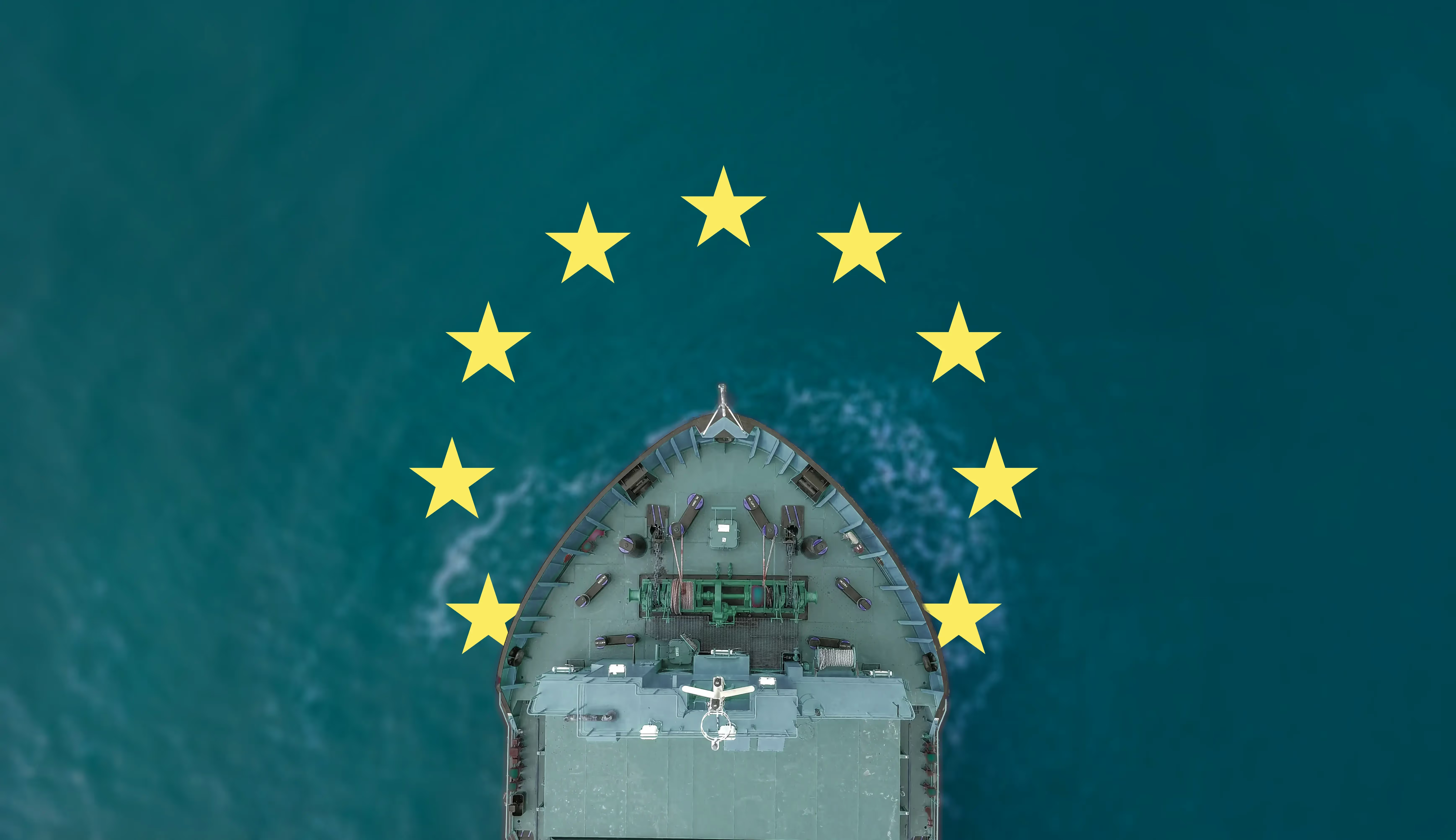

On January 1, 2024, the European Union Emissions Trading System (EU ETS) became the latest regulation to apply to maritime shipping . A “cap and trade” system, EU ETS joins other initiatives, such as the Energy Efficiency Existing Ship Index (EEXI) and the Carbon Intensity Indicator (CII), that aim to get carriers to pay for their emissions and prioritize sustainability.
The EU’s overarching goal for EU ETS is to lower emissions across multiple sectors and to generate revenue to finance the bloc’s ongoing green efforts. The cap reduces annually in line with the EU’s climate targets, meaning that overall emissions should decrease over time. To ensure that this happens, EU ETS requires companies to buy enough EU Allowances (EUA) to cover their emissions output for the year. One EUA equals one ton of CO2 equivalent.

The rollout of EU ETS to maritime shipping is staggered. Initially, the regulation applies to cargo and passenger ships of 5000 gross tonnage or more that enter EU waters and have an EU port of call. If your voyage starts or ends at an EU port, you owe EUAs for 50% of emissions produced; if your voyage starts and ends at an EU port, you are responsible for 100% of emissions produced. There is also an adjustment phase: charges will equal 40% of verified emissions reported in 2024, rising to 70% in 2025, and reaching 100% in 2026. Over the next few years, EU ETS’ reach will expand and apply to offshore ships and smaller vessels, as well.
How much EU ETS costs a maritime shipping company depends on several factors, including vessel size and fluctuations in EUA price. For example, if we assume that the EUA price increases at a rate of 5.5% per year, one study estimates that a container ship that emits 16,000 tCO2e (metric tons of carbon dioxide equivalent) per year would generate €1.66 million in EU ETS costs in 2027. Even if the EUA price remained constant at the 2023 price of €85, that same vessel would generate EU ETS costs of €1.35 million in 2027.
The cost of noncompliance may add insult to injury. Repeated infringements can lead to extra fines of €100 per ton of emissions, the barring of individual vessels from operating in EU waters or ports, the cancellation of EUAs, or even the banishment of entire fleets.

Shipping companies are exploring a variety of approaches to reduce emissions and lower their EU ETS costs, from greener fuels to alternative propulsion to retrofitting existing vessels. The limitation of these actions is that their implementation — and payoff — is long-term. Alternative fuels, for example, will play an essential role in maritime shipping’s green transition, but widespread adoption is not anticipated in the near future. One survey suggests that fuel oil will remain prominent through at least 2050, with no single alternative fuel positioned to overtake it. As such, there is a need for more immediate action that will help carriers reduce fuel consumption, minimize emissions, and mitigate EU ETS costs today.
Voyage optimization is a popular strategy. As market, weather, and vessel conditions change during a voyage, a ship’s sailing strategy can and should adapt. Voyage optimization platforms ensure that vessels dynamically account for these changes and follow the most efficient route to minimize fuel consumption and, in turn, emissions output and EU ETS costs.
For instance, in one analysis, dry bulk carriers sailing between two key iron ore routes achieved an average of 4.5%+ fuel savings per voyage when following the Sofar Wayfinder platform’s optimized guidance. Average emissions output fell by more than 100 MT of CO2 per leg.
These immediate-term emissions reductions also benefit long-term decarbonization efforts. The savings generated by voyage optimization today — and in the future — can be used to help finance innovations that will take years to come to fruition, such as alternative fuels and propulsion.
Once these capex-intensive technologies are adopted, voyage optimization remains essential. Wayfinder’s high-accuracy, ship-specific vessel performance models (VPM), for example, predict and monitor the impact of alternative propulsion and fuels on vessel speed and fuel performance. These insights give carriers unprecedented visibility over the impact of their decarbonization initiatives, helping them determine where to focus investment in the future.
As industry emissions targets, like those adopted at the IMO’s MEPC 80, tighten and new regulations roll out alongside EU ETS, owners and operators will be wise to get ahead and stay ahead of the emissions reductions required to comply. Sofar’s Wayfinder voyage optimization platform is uniquely positioned to help maritime shipping companies make immediate progress towards their decarbonization goals.

The platform uses the most accurate marine weather forecasts and custom calibrated VPMs to generate daily RPM and waypoint recommendations that keep vessels on the most efficient path to port. Wayfinder’s weather forecasts integrate the real-time observations made by Sofar’s Spotter buoy network, and are up to 50% more accurate than the traditional models used by other platforms. Direct observations of weather along a vessel’s route help produce more accurate forecasts and more reliable guidance that drives down fuel, cost, and emissions.
"Sofar Ocean’s real-time sensor-derived ocean data allows our onboard and shoreside teams to dynamically optimize speed and routing decisions with safety, cost, and emissions benefits,” said Jonathan Dowsett, Director of Fleet Performance at Eagle Bulk.
To issue voyage guidance, Wayfinder evaluates millions of routing scenarios each day, taking into account changing conditions and a vessel’s business, safety, and decarbonization targets. EU ETS costs are automatically factored in based on ports-of-call and current regulations, ensuring that any route recommended is in line with a carrier’s EU ETS strategy.
To learn how Wayfinder can help your fleet reduce emissions and minimize EU ETS costs, connect with our sales team.
